When you picture your perfect office, what springs to mind?
A vibrant space that’s filled with greenery and natural light? An office where printers are plentiful? Or one with quirky breakout spaces like rock climbing walls or putting greens?
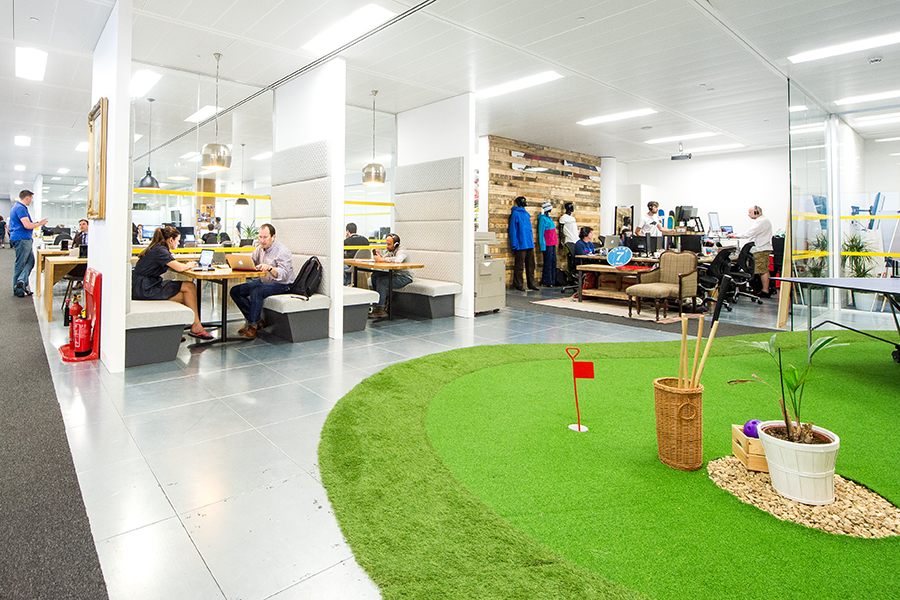
Whether you’re into the practical or peculiar, everyone has a wish list in mind when searching for spaces. But which office building facilities trumped searches last year?
Despite the latest hip trends, our data shows that acquiring the basic necessities remains as a top priority for office seekers.
- What’s the difference between office “facilities” and “amenities”?
- Where can I find office facilities and amenities?
- The official list of the most popular office facilities and amenities of 2024

Finding the right office for your team can be a real challenge, but you don’t have to do it alone.
What’s the difference between office “facilities” and “amenities”?

First things first, let’s briefly explain the difference between office “facilities” and “amenities”.
To put it simply, office facilities are equipment and supplies needed for the day-to-day functioning of a business. Think meeting rooms, WiFi, workstations, conference rooms, and security. If something helps your business run smoothly and efficiently, it’s considered an office facility.
Amenities, on the other hand, are those extra features that enhance the work experience. They’re the perks that make office life more pleasant. Think fully-stocked kitchens, cosy breakout spaces, on-site gyms, and community events.
These office amenities are designed to boost employee satisfaction, encourage breaks, and promote a positive company culture — making the office space more enjoyable.
Where can I find office facilities and amenities?
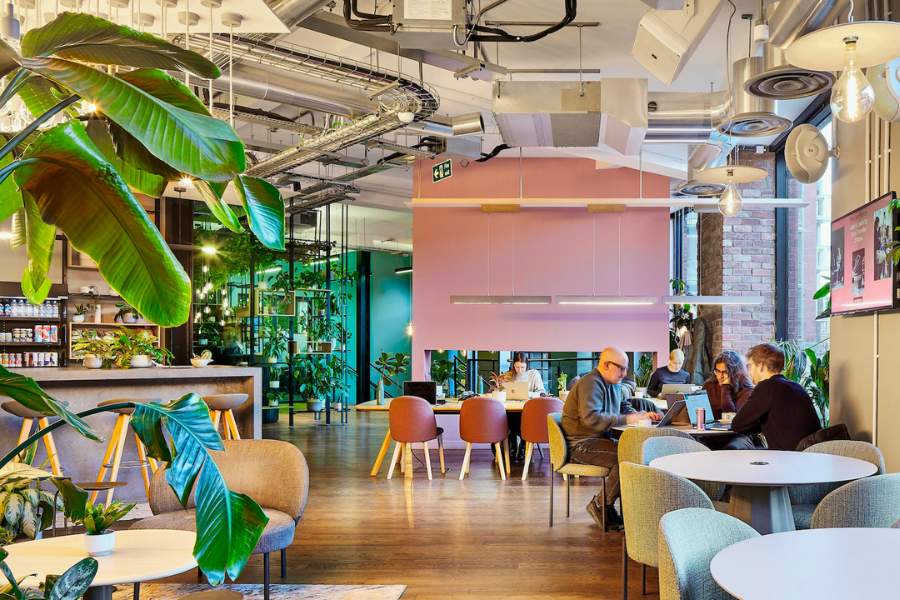
Nowadays, most flexible workspaces will have facilities and amenities for members to use. These are:
- Serviced Offices: A private office ready to go from the day you move in, with all-inclusive fees and facilities. These can either be full-time or part-time flexible rentals starting from one month.
- Managed Offices: A private, “blank canvas” space customised to the tenant’s liking, with all-inclusive fees and facilities. These contracts are still flexible but longer, starting from one year.
- On-Demand Workspaces: A combination of coworking spaces, day offices, and meeting rooms to book by the day or hour, with no contracts needed.
The facilities and amenities you’ll find in these workspaces will be hand-picked for their quality and convenience and to give the provider a competitive edge.
This means each workspace provider will be actively trying to out-do the other with what’s on offer. These could be gyms, wellness studios, childcare facilities… the list goes on!
So, without further ado, here are Hubble’s most searched office facilities and amenities of 2024:
The official list of the most popular office facilities and amenities of 2024
1. Meeting Rooms
It’s no surprise that meeting rooms are the most popular office facility of 2024.
You may have already noticed (…), but meetings are vital to company success. They provide opportunities for your employees to check in with one another, generate creative ideas and foster team spirit — in as little as an hour.

But while meetings are important, they’re also time-consuming. In fact, research shows that executives spend a total of 23 hours per week in meetings. Perhaps that explains why meeting rooms become mysteriously fully booked in what feels like seconds. You know the story.
Luckily, there are plenty of ways to book and access the building’s meeting rooms — and it’s worth establishing this while on your office viewing. But no matter how you access a meeting room, you can expect to use the following facilities:
- Whiteboards
- Screens
- Audio-visual equipment
- Conference phones
- Stationery
- Tea and coffee
With Hubble, you can now book on-demand meeting rooms by the day or hour. Learn more.
2. WiFi
A strong internet connection will never go out of fashion.
In this day and age, very few things can cause a working day to grind to a halt. But poor internet is one of them. Nowadays, WiFi is probably the most essential facility in ensuring that business can actually take place — and the most noticeable when it doesn’t work.
That’s why our customers often ask us questions about the internet speed in offices on our platform.

We’ve all been there. Staring at the screen, waiting patiently for the page to load. The clock is ticking, and huffs and puffs start stuffing the office. It’s no surprise that a dodgy internet connection creates frustrations, but it also dampens work ethic and takes your office back 20 years.
But at Hubble, we want to move you forward. Most flexible workspaces in London come ready-equipped with fibre optic broadband to keep you up to speed with your work and connect with clients and colleagues.
3. 24-hour Access
Flexible working is more important than ever. As it happens, 70% of UK employees say non-traditional working hours make a job more desirable, with 30% preferring it over a pay rise. But our data shows that office seekers are taking flex to the next level: offices with 24-hour access.
For those who feel restricted by the standard 9-5, these offices are the ultimate dream. While one employee may prefer to kickstart their working day after a 6am gym session, others may feel their most creative at night. The beauty is that it’s up to you.

Whether your team is made up of early birds or night owls, office spaces that encourage this freedom go a long way in attracting and retaining talent.
The empowerment felt by employees with agency over their work schedules will maximise productivity and the success of your company. Everybody wins.
4. Furniture
For us at Hubble, the office interior is a big deal. Furniture that visually translates work culture not only drives company performance, but it portrays your brand to clients and potential talent. Just like an ad.
If you value collaboration, WeWork’s cohabiting spaces — fitted with everything from meeting rooms to football tables — will drive team performance. Looking to innovate? This office’s futuristic design is a perfect home for your team to come up with plenty of thought-provoking ideas.

A practical office is timeless. But add a sprinkle of creative flair to the mix, and you’ll be well on your way to finding an office where your company will thrive in 2024.
5. Breakout space
Last year, breakout spaces became a top priority for businesses of all kinds — and it’s easy to see why.
We all need breaks occasionally. When you hit that dreaded mental block and irritability sets in, productivity grinds to a halt.
The solution? Breakout spaces.

From putting greens to epic rooftop terraces, non-traditional breakout spaces are becoming increasingly popular remedies for office cabin fever. Incorporating elements of ergonomic office design and comfort in the workplace, these relaxation spaces offer much-needed respite.
These spaces not only rejuvenate your mind but also provide a place for colleagues to collaborate away from the constraints of traditional office furniture and the typical office environment.
6. Phone booths
One of the great things about flexible office spaces is that many companies share the same building. After all, they are business centers, so it’s not uncommon to bump into like-minded individuals and see familiar faces from time to time.
However, privacy can be a concern. Fortunately, many workspaces on our platform offer phone booths for employees to use — completely free of charge.
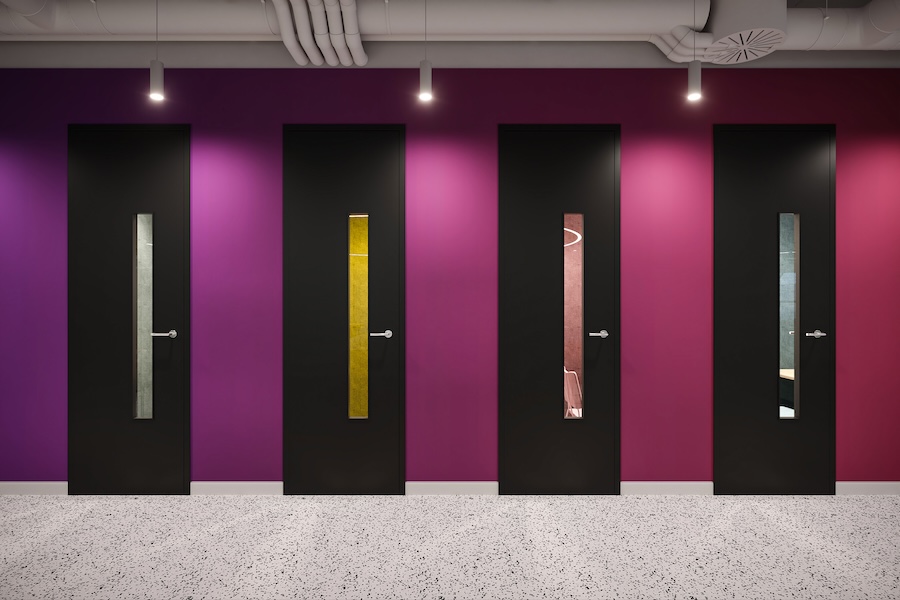
Phone booths create a quiet, isolated environment, allowing individuals to focus and be more productive without distractions.
They also offer great communication flexibility, enabling employees to have private conversations without needing to leave the building or find alternative spaces. Explore workspaces with phone booths here.
7. Pets allowed
A universal study on the effects of having pets in the workspace (specifically dogs) shows that bringing dogs to work can lower stress and increase employee satisfaction.
It’s no surprise, then, that “pet-friendly” facilities accounted for 13% of total searches last year!

Thanks to strict health and safety protocols in most workspaces — including regular cleaning routines and the availability of first aid kits — many providers on the Hubble platform allow you to bring your furry friends to work. Search for them here!
8. Reception
Receptions joined the facility hot list last year, and we’re not surprised. Not only do they play a key role in keeping your business a well-oiled machine, but they act as a solid first impression.
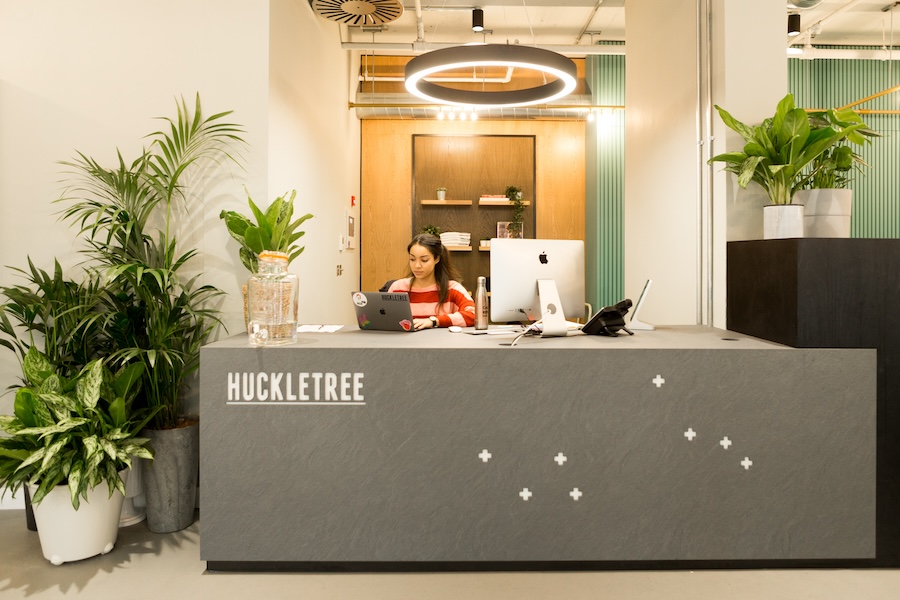
Clients, guests and potential talent can spend anywhere between a few minutes to half an hour waiting at reception, so Hubble advises to pick wisely. Luckily, most coworking spaces provide inviting and trendy reception areas that are ready to do the work for you.
They also utilise a balance between in-person and digital receptions, which come with their perks. Digital sign-ins are both cost and time-efficient, whereas a reception area that’s run by friendly employees humanises what ideals your company is associated with. Find all of your options here.
9. Cleaning services
Searches for office cleaning services remained just as popular in 2024. We’ll tell you why.
A clean office is a happy office. The benefits are bountiful, from improving air quality to maximising employee productivity. When the average person wastes hours per week searching through paper clutter, ensuring that your office stays neat and tidy goes a long way.
But why manage the cleaning yourself? Serviced offices will almost always include cleaning in their list of perks. So, put away that vacuum and say goodbye to your weekly cleaning rota. Take a look at our offices where cleaning is included.
10. Kitchens
Next, we have kitchen facilities, which were popular searches for good reason. Office kitchens are more than just a place to fix yourself a cup of tea or microwave your lunch (though those are great reasons, too!).
Kitchen facilities can also reinforce work-life balance. They give you a chance to take a break from staring at screens and provide a space to relax and socialise.
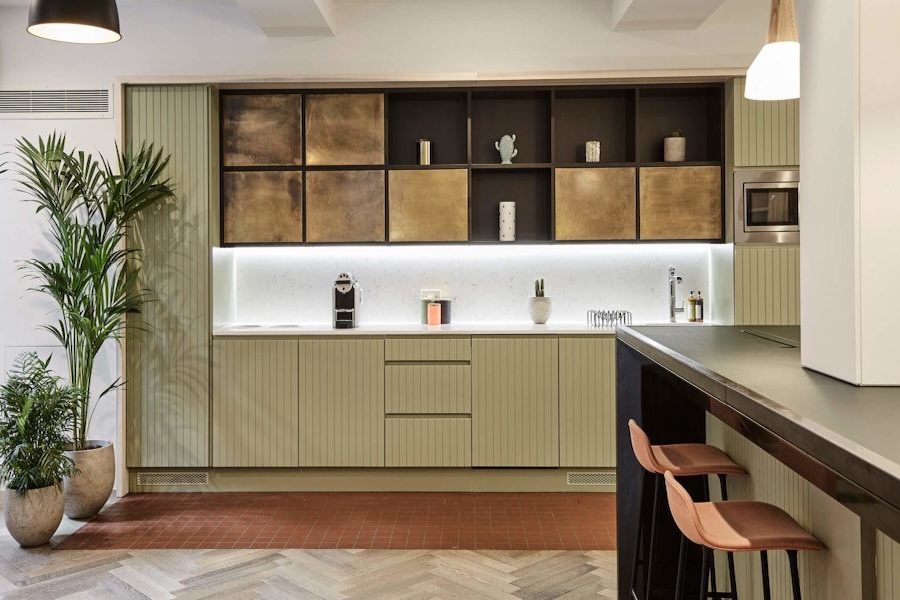
In this economic climate, kitchen facilities offer a great way to save money on expensive lunches by allowing you to bring in your own food to store and heat up. They can also encourage healthier eating habits!
11. Mailing Addresses

Our data saw a doubling of searches for mailing addresses last year. By having a professional mailing address, the heavy lifting is done for you. Your post is sorted and held on your behalf, ready for you to collect at your leisure.
Find an office with everything you need with Hubble
At Hubble, we help businesses give their teams great places to work. On our easy-to-use platform, you can easily find an office space and filter for the exact facilities and amenities you need.
Once you’ve found a workspace you like, you can get in touch with Hubble’s Tenant Advisors to help organise viewings, send you recommendations, and even negotiate you a deal on your new office — all completely free!






